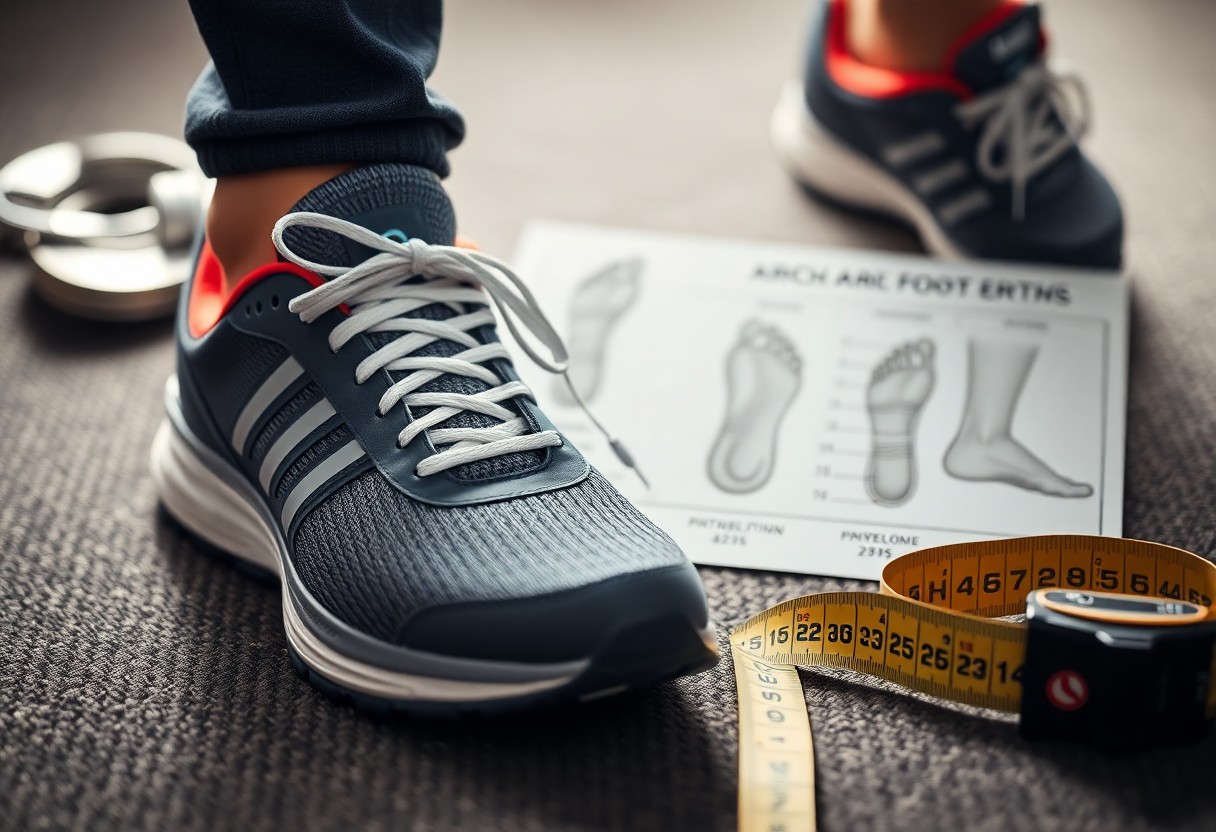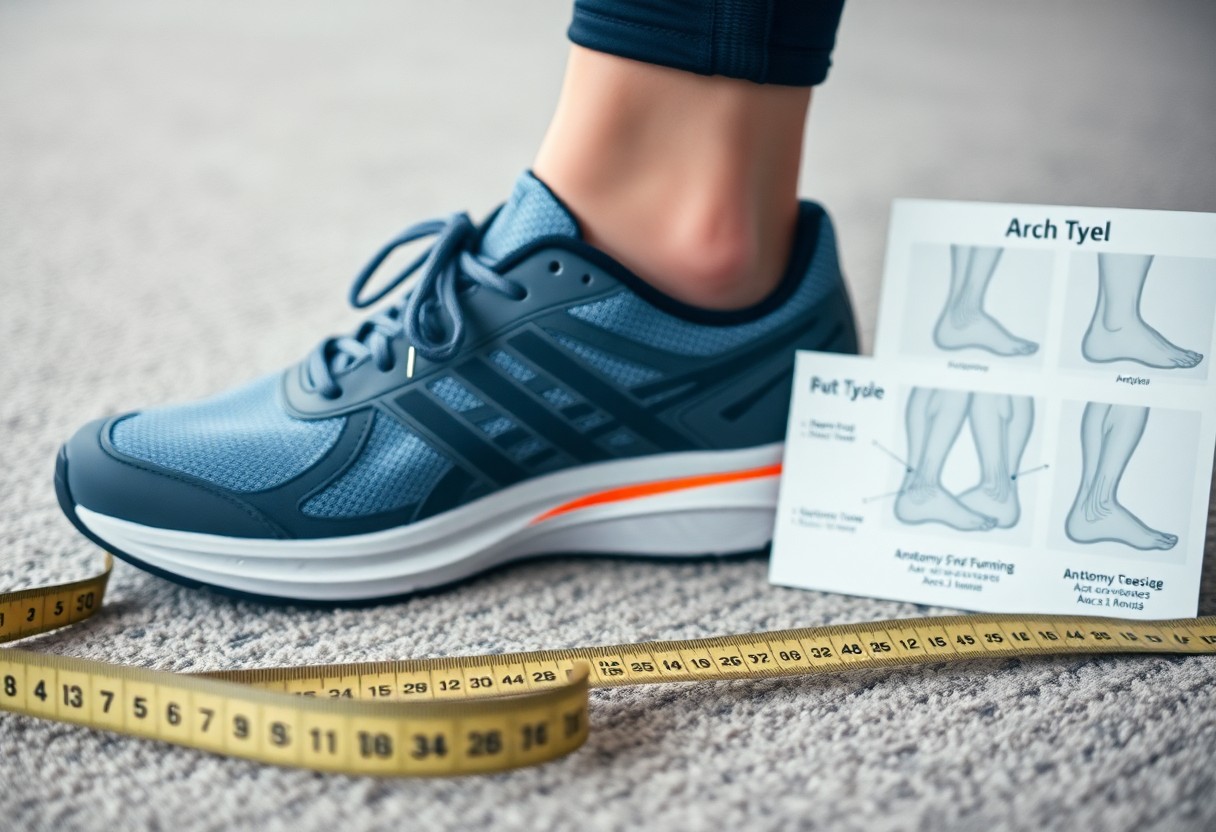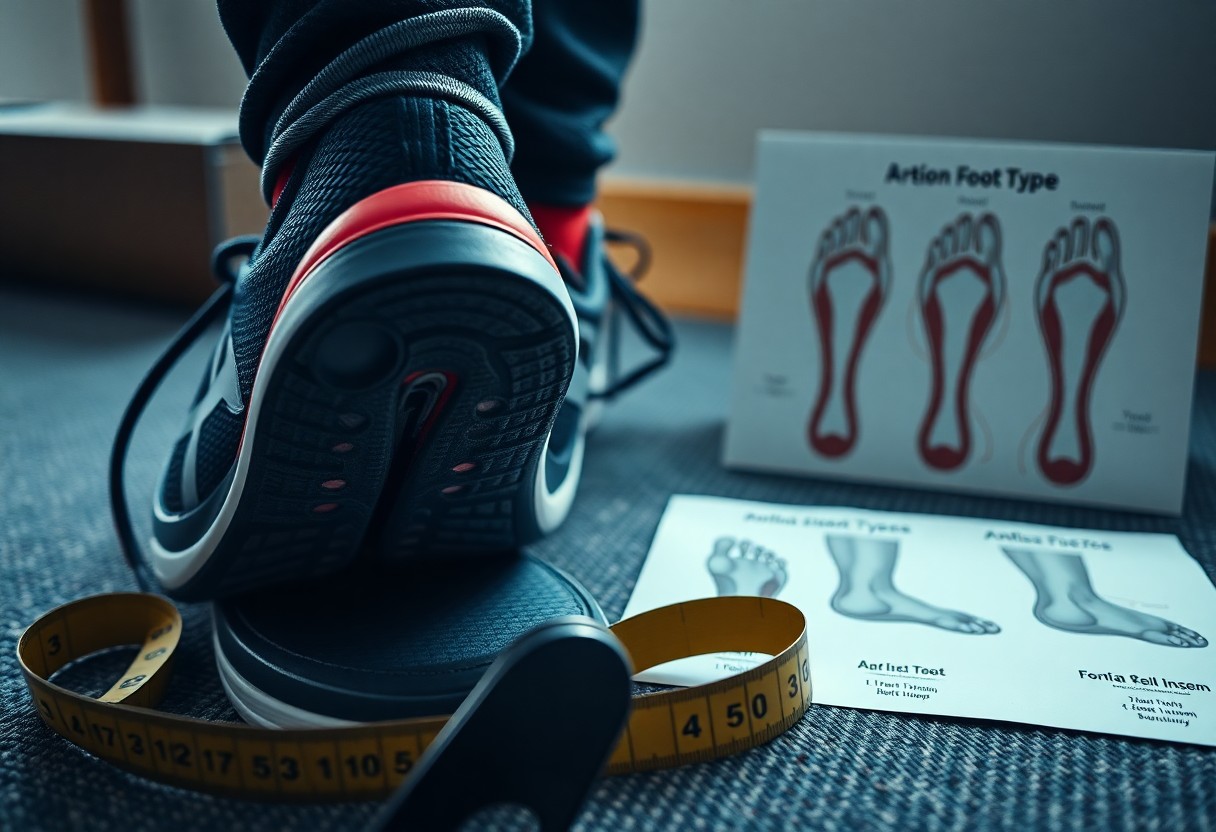Supporting your feet effectively goes beyond simply adding arch support to your shoes. It’s quite surprising to learn that the majority of people do not actually need arch support in their footwear. Scientific research indicates that abandoning arch support can boost the strength of your foot muscles. Over time, becoming dependent on artificial supports can weaken these muscles. The human foot is naturally designed with arches that flex and adapt to different surfaces, and restricting this natural flexibility with rigid supports can negatively impact your foot health in the long run. This detailed article aims to explore the science behind arch support, empowering you to make informed choices regarding your foot wellness.

Exploring the Evolution of Arch Support in Footwear Design
The natural support system of your feet has played a vital role in the design of footwear over many centuries. The concept of arch support began to gain prominence in the 1920s with Dr. William Scholl’s groundbreaking introduction of commercial orthotics. Before this innovation, people relied on the natural strength and flexibility of their feet. Understanding this historical context sheds light on how our perceptions of foot health have transformed and highlights the necessity to reassess contemporary footwear practices.
Tracing the Shift from Traditional Footwear to Modern Solutions
The history of footwear illustrates that ancient societies primarily utilized simple, flat sandals or often went barefoot. Such practices promoted natural foot development and resilience. The feet of our ancestors remained strong and flexible, independent of artificial supports, as demonstrated by research on indigenous populations who continue to embrace traditional footwear practices. This historical viewpoint emphasizes the crucial role of natural foot mechanics in preserving foot health, which modern trends frequently overlook.
Evaluating the Effects of Contemporary Shoe Design on Foot Wellness
During the mid-20th century, particularly in the 1950s, shoe manufacturers began to standardize built-in arch support as a common feature in footwear. Today, most modern shoes incorporate structured arch support, a characteristic that has become an industry standard despite the lack of substantial scientific evidence supporting its universal necessity. This trend reflects changing consumer expectations and industry norms but raises critical questions about how these designs impact foot health. With around 70% of modern footwear featuring arch support, it’s essential to assess whether this dependence is beneficial or harmful.
Research published in the Journal of Foot and Ankle Research indicates that excessive dependency on arch support may lead to muscle weakness in your feet. As a result, many podiatrists now recommend incorporating barefoot walking and using minimally supportive shoes to maintain natural foot strength and promote comprehensive foot health.

Understanding the Intricate Anatomy of the Human Foot
Your feet consist of 26 bones, 33 joints, and over 100 muscles, functioning most effectively when allowed to move freely. The arch of the foot is a self-supporting structure that gains strength through regular activity and becomes weaker when exposed to artificial support. Studies reveal that 75% of individuals who wear conventional shoes with arch support experience reduced activity in their foot muscles, which can lead to diminished natural foot strength over time. This underscores the significance of allowing your feet to move naturally.
Recognizing the Advantages of Natural Foot Mechanics
The design of your foot is a remarkable feat of engineering, featuring a complex system of self-support mechanisms. Walking barefoot or in minimalist shoes allows your feet to engage fully, enabling your arches to flex and strengthen naturally. Research indicates that individuals who frequently walk barefoot or prefer minimal footwear develop stronger foot muscles and more stable arches compared to those who depend on supportive shoes. This highlights the critical importance of natural movement in maintaining foot health, as it enhances the body’s ability to uphold its structural integrity.
Implementing Strategies to Improve Foot Muscle Strength and Function
Disrupting your foot’s natural mechanics can impede its development. Your foot muscles require regular activity through natural movements to sustain their strength. A study published in Nature suggests that wearing shoes without arch support fosters the growth of more robust intrinsic foot muscles. This connection emphasizes the importance of natural movement for optimal foot health, especially for individuals experiencing discomfort or weakness in their feet.
Moreover, it is essential to be aware of the implications of wearing shoes with built-in arch support. Such shoes can cause foot muscles to become less engaged, leading to potential weakness over time. Research indicates that shifting to minimal footwear can result in an impressive increase in foot muscle strength by as much as 60% within eight weeks. However, it’s crucial to approach this transition carefully, particularly if you have existing foot issues, to prevent injuries and ensure a healthy adaptation process.
Delving into Scientific Studies and Evidence Surrounding Foot Health
If you’re eager to understand the science behind arch support, numerous studies show that your feet can strengthen without artificial support. Various investigations highlight that natural foot movements enhance muscle development and improve arch stability, underlining the important role of biomechanics in foot health and the potential risks associated with over-reliance on artificial supports.
Highlighting Critical Research Findings on Arch Support
Among the most significant research outcomes, a study published in Nature indicates that individuals who wear minimal footwear develop foot muscles that are 50% stronger than those who wear traditional supportive shoes. This evidence reinforces the idea that consistent movement and exercise allow your feet to maintain their arches naturally, emphasizing the importance of selecting appropriate footwear.
Comparative Insights on Footwear Choices Across Various Demographics
Comparing Traditional Shoe Users with Minimal Footwear Enthusiasts
| Traditional Shoe Users | Minimal Shoe Users |
| Exhibit higher rates of flat feet | Demonstrate superior arch strength |
| Show weaker foot muscles | Exhibit stronger foot muscles |
An extensive analysis of different populations reveals significant variations in foot health. The type of shoes you choose can profoundly impact your foot structure, highlighting the necessity for individuals to actively evaluate their footwear decisions.
Insights from Global Footwear Studies
| Developed Countries | Barefoot Communities |
| 20% flat foot occurrence | 3% flat foot occurrence |
| Higher reliance on arch support | Natural arch strength |

Reevaluating the Support Paradox in Footwear Choices
Challenging common assumptions, overdependence on arch support in shoes can undermine your feet’s inherent strength. The human foot is intricately designed with a sophisticated array of muscles, tendons, and ligaments that work together to provide natural support. When artificial arch support takes over this function, your foot muscles may become less engaged, leading to gradual weakening and a diminished capacity to perform daily activities effectively.
Understanding the Cycle of Dependency on Arch Support
Relying heavily on arch support creates a detrimental cycle. Feet can become dependent on external support, leading to muscle atrophy. Research shows that 70% of users of arch support report heightened discomfort when walking without their supportive shoes, illustrating the development of this dependency that can adversely affect overall mobility and comfort.
Connecting Muscle Weakness with Excessive Use of Arch Support
Wearing shoes with built-in arch support could weaken your intrinsic foot muscles by as much as 50%, according to findings from Nature. This weakening compromises your feet’s natural arch support system, potentially leading to conditions such as flat feet and other foot-related issues. It’s essential to recognize that this muscle weakness can extend beyond the feet, as weakened foot muscles can negatively affect overall posture and balance. Studies suggest that individuals transitioning to minimal footwear often experience a 60% increase in foot muscle strength within six months, demonstrating the advantages of avoiding unnecessary supports.
Exploring Natural Alternatives for Improved Foot Health
For those seeking to move away from conventional arch support, several natural alternatives can enhance foot strength. These strategies emphasize allowing your feet to function as they were designed, facilitating the development of stronger foot muscles and more stable arches through natural movements and practices that support foot health.
Adopting Minimalist Footwear for Optimal Natural Motion
Minimalist shoes, defined by zero drop soles, wide toe boxes, and flexible materials, encourage natural foot movement. These designs allow your feet to move freely, assisting in the maintenance of proper foot mechanics and fostering natural arch strength. Research indicates that regular use of minimal footwear can increase foot muscle strength by up to 60% through everyday activities, reinforcing the necessity of selecting appropriate footwear for your lifestyle.
Practical Steps for Transitioning to Minimal Footwear Safely
When contemplating a switch to minimalist footwear, it’s essential to take a careful and gradual approach to ensure your safety and comfort. Begin by wearing minimal shoes for short periods, gradually extending the duration over several weeks. This method helps prevent overuse injuries as your feet adapt, ensuring a smoother transition that supports long-term foot health.
A successful transition should ideally incorporate specific foot strengthening exercises. Start with 10-15 minutes per day in minimal shoes, increasing by 5-10 minutes each week. Include exercises such as toe spreads and brief barefoot walks on safe surfaces. This incremental strategy allows you to reduce the risk of common transition injuries while effectively enhancing your natural arch strength, ultimately promoting better overall foot health.
Considering Individual Medical Needs for Optimal Foot Wellness
It’s crucial to recognize that your foot health requires personalized attention. While natural foot movement benefits muscle strength, certain medical conditions may necessitate specific support. Factors such as your foot structure, activity level, and any pre-existing conditions will impact your optimal footwear choices, underscoring the need for tailored assessments.
Identifying Conditions That May Necessitate Arch Support
Contrary to popular belief, arch support is not universally required. However, individuals with acute injuries, severe flat feet, or specific medical conditions may benefit from temporary or permanent arch support. Research indicates that only 10-20% of the population truly requires specialized arch support for medical reasons, highlighting the importance of personalized evaluations to ensure optimal foot health.
Guidelines for Comprehensive Professional Foot Health Evaluations
To ensure you make informed choices about your footwear, it’s advisable to consult a foot health specialist. Thorough assessments should encompass gait analysis, evaluation of foot structure, and review of medical history. These components are vital for determining whether you need arch support or if transitioning to minimal footwear is a feasible option for your unique circumstances.
Guidance from a qualified professional can provide clarity and direction for your foot health journey. A thorough assessment should include measuring arch flexibility, assessing muscle strength, and analyzing walking patterns. Your healthcare provider should also consider your daily activities and any past foot injuries to formulate a tailored treatment plan that aligns with your needs and lifestyle.
Assessing Footwear Choices and Their Effects on Foot Health
Your selection of footwear plays a significant role in your foot health. You now recognize that arch support is not necessary for most individuals and may indeed weaken foot muscles over time. Your feet possess inherent strength and flexibility, functioning optimally when allowed to move as nature intended. If you’re contemplating a transition to minimal footwear, taking this step gradually will facilitate effective adaptation. The evidence clearly indicates that allowing your feet to function without artificial support can lead to stronger muscles and enhanced foot health for the majority. Always consider your specific needs and consult a foot health professional for personalized guidance regarding your foot health.
Addressing Common Questions About Arch Support and Foot Wellness
Do healthy feet require arch support in footwear?
Most healthy feet do not require arch support in footwear. Research shows that natural foot strength develops more effectively without artificial supports. The foot’s muscles and arches perform best when allowed to function naturally. This is consistent with findings from populations that frequently walk barefoot or prefer minimalist shoes, which exhibit stronger foot muscles and fewer arch-related problems.
Can prolonged arch support weaken feet over time?
Yes, extended reliance on arch support can lead to weakened foot muscles. When artificial support takes over the role of the foot muscles, these muscles become less active and gradually lose strength. This situation can create a dependency cycle. Studies published in Nature indicate that individuals who consistently wear conventional shoes with arch support often show weaker foot muscles compared to those who choose minimal footwear.
Who genuinely needs arch support in their footwear?
Some individuals with specific foot conditions, injuries, or medical issues may genuinely benefit from arch support. This includes those diagnosed with flat feet, certain foot injuries, or structural abnormalities. However, these situations should be evaluated by a foot health professional who can develop an appropriate treatment plan. The goal should be to restore natural foot function whenever possible, rather than relying on permanent support.
The Article Arch Support: Essential Facts About Shoe Necessities Was Found On https://limitsofstrategy.com
The Article Arch Support: Key Insights on Essential Shoe Needs First Appeared ON
: https://ad4sc.com



Comments are closed